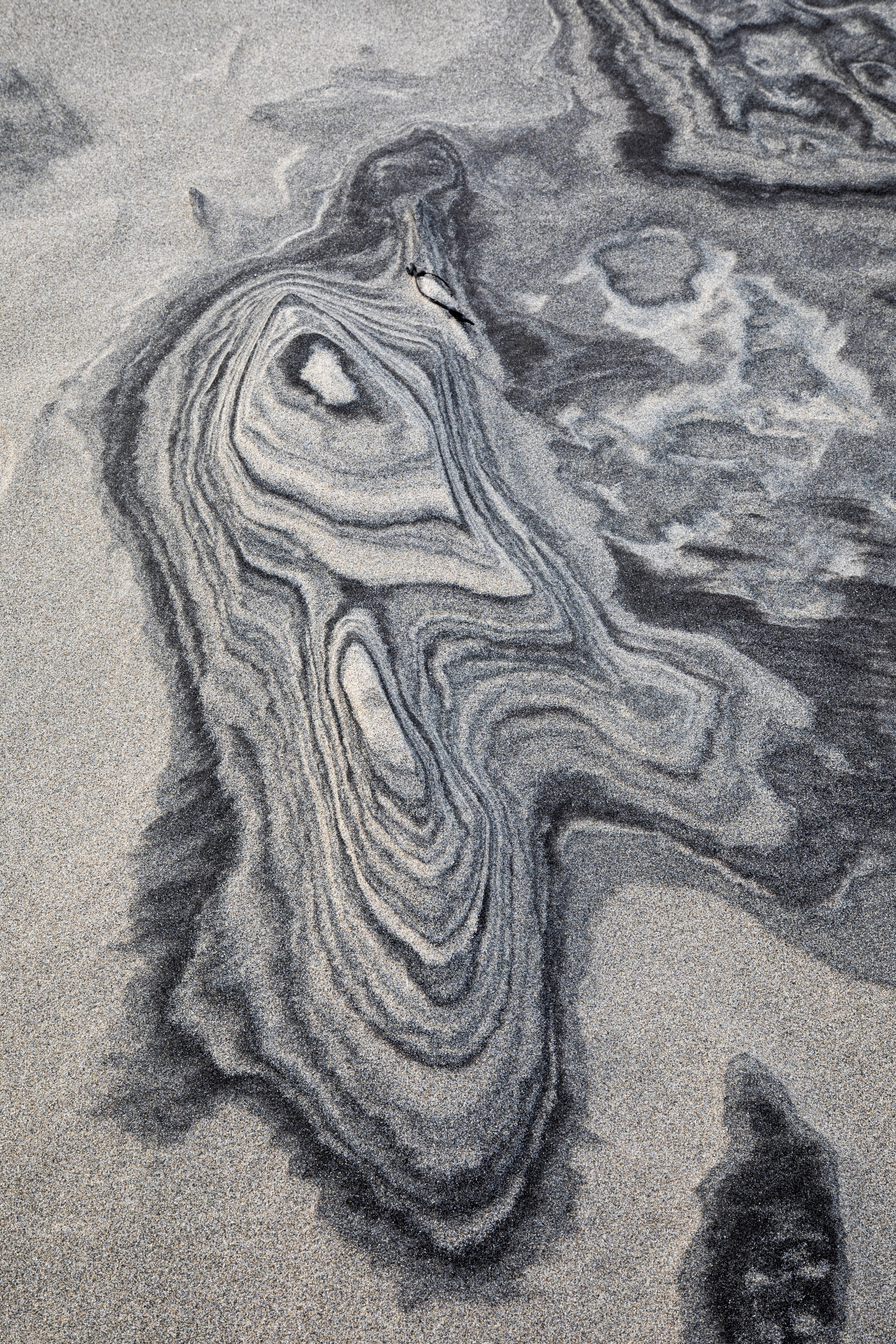With each step I destroy a work of art. That’s how it feels. The beaches of Lewis, one of the Scottish Outer Hebrides islands, create art. Every day. With the tides the water flows over the sand, like a painter’s brush. When the water retreats at low tide the new sand structures become visible, until high tide smooths everything away and the creation process starts all over again.
What is art? There are as many answers as there are art expressions, it seems, and they are all rooted in Western cultures and traditions, based on scientific, Newtonian analysis, as opposed to the more intuitive and holistic worldview of the East. In Japan, in Zen Buddhism, the artist is not so much seen as the maker of art, but rather as an intermediary. Art is valued when the artist manages to switch off the ego and the work of art - through meditation - creates itself in a spontaneous moment of satori.
Nature as the creator of art, Isle of Lewis.
According to all common theories the creation of art is exclusively the domain of humans, because it is considered a conscious process in which all sorts of choices are being made. A tree trunk of a fallen tree in the woods - however appealing and beautiful it may be - is not art. But when the same tree trunk is used by an artist in a museum, it is. The tree becomes art simply because of the artist’s intention. The trunk as object hasn’t changed. The sand structures created on the beaches of Lewis are not considered art, but if an artist uses the same sand, water and location to sculpt something similar, it is. But if intention is the criterium, then everything is art that I consider as such. And if everything is art, then nothing is. And that is very Zen!
Zen art is made without any effort or purpose (Wu Wei), and without a conscious creation process. It is sometimes called artless art. Zen art is spontaneous, here and now, mushin (lit. “no-mind”), focussed on nothing. And with just a little bit of intellectual agility you could consider the Lewis sand structures art, formed by nature without a conscious effort. I continue my walk more carefully.
I pause and slowly turn around 360 degrees. I observe the heavy clouds above the sea, the grey mountains far away, the gold coloured dunes topped with long grass moving with the wind, and back again to the white, foamy waves. It’s not difficult to feel connected to nature, or rather to feel one with nature. But what does that mean, “one with nature”? In Zen philosophy there’s no separate “I” from nature; there is no “I”, that is an illusion. There is no observer, no object and subject; they are inseparable. There is what is, and that’s it.
If, in any painting or photograph, a person is depicted as very small within a wide space of nature, there is a possibility that the viewer will recognize that small form as one’s self and that this self is not separate from the vast space. That is to say, such a picture may inspire the realization that one is the vast space itself. When it is recognized that the vast space contains the form and that one is both the vast space and the form — at the same time — this is a realization of nonduality.
~ Jerry Katz
The 13th century mystic and philosopher Meiser Eckhart wrote: “The eyes with which I see God are the same eyes with which God sees me”. I translate that as: “The eyes with which I see the landscape are the same eyes with which the landscape sees me”. The landscape and the photographer are one, and have an intimate and non-dualistic relationship. Meister Eckhart: “One seeing, one knowing, one love”.
If the photographer and the subject are one, then every photo is a selfie.
Who would dare tread on something beautiful as this?
This reminds me of Munck’s “The Scream”
Nature’s finished artwork (for now)



